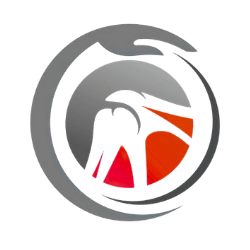How Do I Know If I Have a Posterior Labral Tear?
Before we discuss “how do you know if you have a posterior labral tear”, we will describe what the labrum. Also we will the discuss how it is possible to tear. The posterior aspect of the labrum is the back of it. Typically a tear of the posterior labrum creates a vague deep ache in the shoulder/upper arm. There may or may not be a known injury.
Anatomy of the labrum
The labrum is a thick tissue that surrounds the joint. There are two types of joints in the body that have a labrum. These two joints are the shoulder and the hip. The labrum performs the same function in both the hip and the shoulder. The labrum deepens the socket increasing the stability of the joint. It goes circumferentially around the socket. There are different areas of labrum. Each area of the labrum undergoes stress with different motions. There are three specific areas of the labrum that are predominately injured. Understanding the anatomy of the labrum will help us understand how to know if the posterior labrum is torn. The three areas we will discuss are: the anterior labrum, the posterior labrum, and the superior labrum. The inferior labrum is usually injured in addition to the anterior or posterior labrum, rarely is it injured independently.
The Anterior Labrum
The anterior labrum is stressed with abduction and external rotation. This is similar to the position you would have before giving a high-five. This motion is abduction and external rotation. When the labrum undergoes extreme stress in this position it often results in an anterior dislocation. This can result in a tear of the anterior labrum as well as potentially the superior labrum.
The Superior Labrum
The superior labrum is stressed by the pull of the biceps. The long head of the biceps comes into the joint and attaches to the superior, ( the top part) of the labrum. The extreme motion that typically create a labral tear is extreme external rotation in an abducted arm. We see this commonly in baseball pitchers
The Posterior Labrum-Posterior Labral Tear
Lastly and most important for today’s article is the posterior labrum. A posterior labral tear is less common than the anterior labral tear. The posterior labrum is stressed with an abducted arm and posterior force. An example of this position is pushing open a door with a straight arm. When you have a excessive posterior force on an adducted arm the resultant is a posterior labral tear. Unlike the anterior labrum, rarely do we have a posterior dislocation of the shoulder. We see this often in football lineman who try to hold off the opposing team with the adducted arm or weightlifters in heavy bench press. Both of these direct the force posteriorly and if excessive enough create a labral tear. So using these clues helps us to know if the posterior labrum has been torn.
The symptoms of a posterior labral tear are often vague. General ache and soreness of the shoulder is typical. Often with no specific identifiable injury. The posterior labral tear is be recreated by directing a posterior force on the adducted arm as well as the Kim test.
Treatment for Posterior Labral Tears
Identifying a Posterior labral Tear
The treatment for posterior labral tears, like most things in orthopedics, is initially conservative. Ice, anti-inflammatories, rest and physical therapy. If there is no improvement then we will proceed with an MRI arthrogram. Dye is injected into the shoulder prior to the MRI in an arthrogram. The dye allows us to the labrum and the biceps more accurately.
If there is a posterior labral tear that has failed conservative management surgical intervention may be necessary. Most surgical repairs of posterior labral tears already treated arthroscopically. Open exposure to the posterior aspect shoulder is very difficult. Sometimes the posterior labral tear just needs to be “cleaned up” ie. debrided. Other times the posterior labrum needs to be repaired. The typical repair is performed using an anchor. The anchor is placed in the bone and the sutures from the anchor are passed around labrum and then secured to repair the labrum.
There is extensive postoperative care after labral repair. There is a significant amount of Rotator Cuff Rehabilitation because the rotator cuff helps stablize the shoulder. During the initial recovery motion is restricted. Typically the release to full activities would be somewhere around 6 -9 months after the surgery. This depends on the severity of the surgery, the quality of the repair, and the age of the patient.
Conclusion
Posterior labral tears can sometimes be difficult to diagnose, as they present with more vague shoulder pain. They may or may not have an obvious injury. A posterior labral can be treated in different ways. The body can heal itself, or if necessary it can be surgically repaired. It is a long road to recovery, but most people can recover from this tear and return to most activities. Even high level athletes, including baseball pitchers can recover very well. https://pubmed.ncbi.nlm.nih.gov/31084490/
